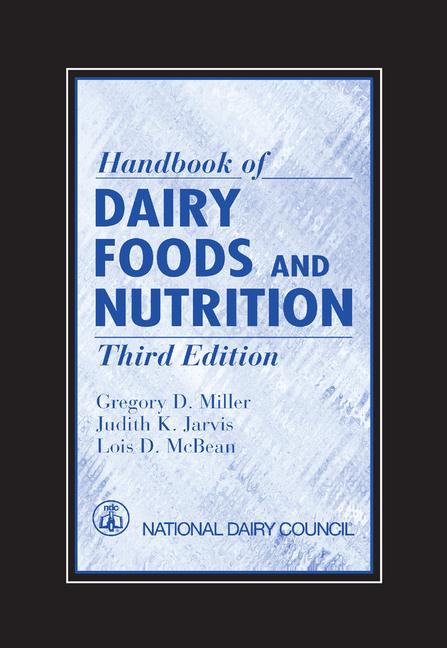In this age of negative and “gotcha” reporting about our food supply and the food industry, let’s not forget that dairy foods satisfy us and meet our needs in so many ways.
In this age of negative and “gotcha” reporting about our food supply and the food industry, let’s not forget that dairy foods satisfy us and meet our needs in so many ways. Arguably, nothing can beat a bowl of ice cream with fresh ripe peaches or strawberries and a drizzle of smooth chocolate sauce on a hot summer day.
What goes better with a couple of Oreo cookies after school than a cold glass of milk (skim, low fat or whole!)?
To complete a special dinner, imagine a glass of fine 25-year-old port matched perfectly with a few slices of aged Gouda cheese or a small wedge of creamy blue cheese.
In other words, dairy foods satisfy our taste buds. Couple this fact with the observation that the various dairy foods are readily available in a wide array of choices - sizes and flavors at fantastic price points that contain an excellent source of key macro- and micronutrients - and you have additional reasons why the food industry continues to look for new ways to bring dairy into food products.
Dairy in all its forms and flavors
Think about the fact that dairy is consumed in the form of liquids (beverages that are refreshing to creamy and in pick-me-up to slow-me-down formulations), semi-solids (spoonable, spreadable and sliceable with sweet, sour or savory profiles) to solids (scoopable, grated or reconstituted).
In other words, dairy foods and ingredients have the flexibility and capability to meet a diverse array of consumer needs for a variety of occasions. How many other foods or food ingredients do you know that are capable of meeting needs from infancy to old age, from fast food eateries to high-end restaurants, from breakfast to dessert, or from athletic fields to hospitals?
There’s more. First, ongoing research is uncovering that milk and components from milk may have value beyond basic nutrition to beneficial roles in other important health and wellness areas such as intestinal health, lean body mass, immune function, cardiovascular health, satiety, stress reduction, regulation of inflammatory response and cognition. Second, because many dairy foods like yogurt and low-fat milk enjoy widespread consumer acceptance as “good for you” and because these products can be effective carriers of other nutrients and functional ingredients (for example, vitamin D, Omega-3 fatty acids, phytosterols, antioxidants, etc.), the dairy space is becoming one of the most complete health food sections of any supermarket.
Ingredients add functionality
The dynamic and rapid nature of this evolution of the dairy industry has not been without its challenges. Flavor and stability have limited some product applications. Fortunately our processors have been able to respond and to provide continuous improvement of their ingredients and other dairy foods to better meet the needs of food and dairy processors.
A good example is the vast array of dairy ingredients with improved functionality and/or targeted nutritional benefits. Processors now modify, enhance and/or purify dairy streams to intensify their sensory, nutritional and functional performance in food systems. Additionally, new dairy ingredients are now available that are high in milkfat globule membrane components, milk minerals and specific amino acids (e.g., glutamine, threonine, cysteine, methionine, tryptophan and leucine), which are important precursors to compounds or responses that may be associated with specific health benefits or new functionalities.
We have also learned through improvements in our understanding of ingredient interactions to more effectively use traditional dairy ingredients in the more challenging food systems. The food industry has developed a new generation of flavors that can mask undesirable flavor notes and enhance product acceptability. The industry also has developed other functional food constituents that complement dairy in food systems to stabilize, emulsify, fortify or enhance the quality of the food.
Nowhere are these trends in dairy more true than in the whey ingredients sector. It is estimated that whey powder, whey proteins, lactose and permeate collectively are a $6.6 billion dollar business in 2010 and will grow 3% to 4% a year to $8.4 billion by 2014. With this growth will come new ingredient innovations that will fuel more new product applications.
For those just getting started in exploring how a new generation of new and/or improved dairy ingredients can address consumer needs, see these sources:
• Dairy Management,www.innovatewithdairy.com
• US Dairy Export Council Applications monographs,www.usdec.org
• Cal Poly Dairy Ingredients Applications Program,www.dptc.calpoly.edu
To find out the latest in dairy ingredients technology and utilization, attend the 13th Annual Dairy Ingredients Symposium, March 1-2, 2011 in San Francisco (www.dptc.calpoly.edu/short.html) and the 6th International Whey Conference, Sept.12-13, 2011 in Chicago.
Stay ahead of the curve. Unlock a dose of cutting-edge insights.
Receive our premium content directly to your inbox.
SIGN-UP TODAYCopyright ©2024. All Rights Reserved BNP Media.
Design, CMS, Hosting & Web Development :: ePublishing



